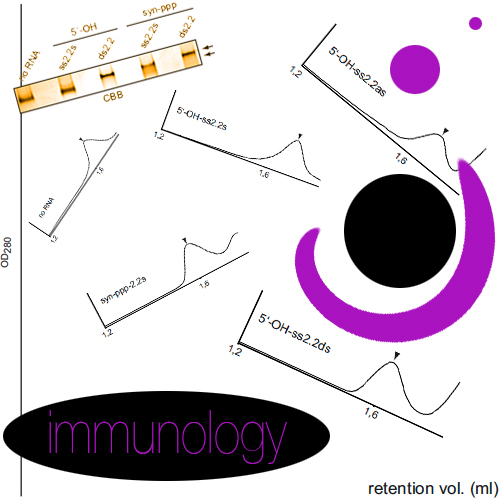5'-triphosphate RNA requires base-paired structures to activate antiviral signaling via RIG-I
02-Jul-2009
The ATPase retinoid acid-inducible gene (RIG)-I senses viral RNA in the cytoplasm of infected cells and subsequently activates cellular antiviral defense mechanisms. RIG-I recognizes molecular structures that discriminate viral from host RNA. Here, we show that RIG-I ligands require base-paired structures in conjunction with a free 5′-triphosphate to trigger antiviral signaling. Hitherto unavailable chemically synthesized 5′-triphosphate RNA ligands do not trigger RIG-I-dependent IFN production in cells, and they are unable to trigger the ATPase activity of RIG-I without a base-paired stretch. Consistently, immunostimulatory RNA from cells infected with a virus recognized by RIG-I is sensitive to double-strand, but not single-strand, specific RNases. In vitro, base-paired stretches and the 5′-triphosphate bind to distinct sites of RIG-I and synergize to trigger the induction of signaling competent RIG-I multimers. Strengthening our model of a bipartite molecular pattern for RIG-I activation, we show that the activity of supposedly “single-stranded” 5′-triphosphate RNAs generated by in vitro transcription depends on extended and base-paired by-products inadvertently, but commonly, produced by this method. Together, our findings accurately define a minimal molecular pattern sufficient to activate RIG-I that can be found in viral genomes or transcripts.











